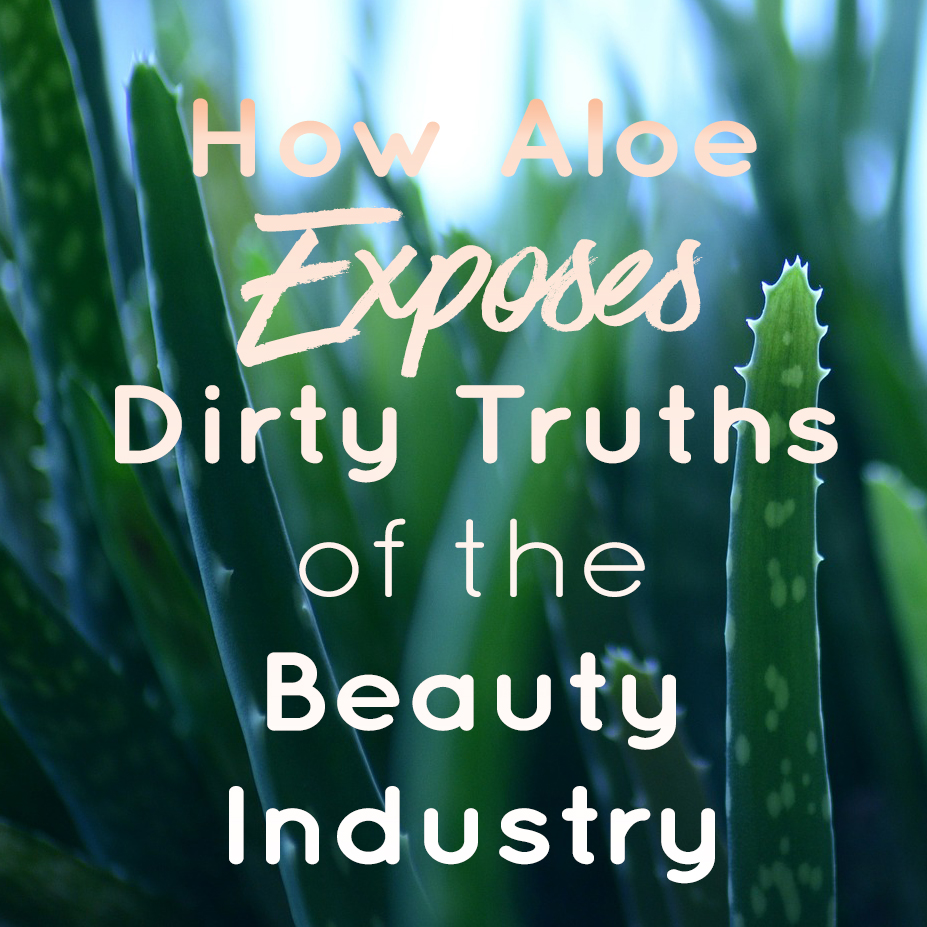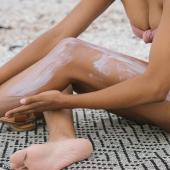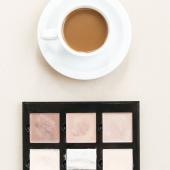How Aloe Exposes Truths of the Beauty Industry
I was talking to a lady boss friend recently (shout-out to Adrienne Krieger of Everling Jewelry – seriously, go check her out) about the pervasive presence of aloe vera in makeup products.
While aloe is excellent for treating sunburns, acne, aging, stretchmarks, and more, the heavy usage of the popular green plant makes green-beauty-hunting difficult for those like Adrienne who are allergic. (Fun fact, people who are allergic to aloe are also likely to be allergic to other plants of the Liliaceae family, including garlic, onions, and tulips.)
Through our conversation, it became clear that aloe is an excellent case study for explaining shortcomings of labeling regulations and how difficult label reading can be.
The First Truth
People who suspect they have an allergy may not be allergic to aloe vera at all, but rather to accompanying preservatives and other additives. Read on to find out why.
The Second Truth
According to FDA labeling regulations, cosmetics ingredients lists do not have to declare "incidental ingredients." Incidental ingredients refer to chemicals, such as preservatives, that are used to preserve individual ingredients as supplied (to the cosmetics maker) by the ingredient manufacturer. For example, if Company A sells aloe vera juice containing a paraben preservative to company B and company B uses the aloe vera juice (with said paraben) in a face cream that is sold to consumers, Company B does not have to declare the paraben preservative that Company A added to the aloe vera juice on the label or anywhere else. Cosmetics manufacturers are required only to list preservatives that they add to preserve the final, finished product. Yes, the paraben preservative is still there (albeit not in a dose intended to protect the entire product), it's just not on the label. You read that correctly: There may be ingredients in your product that are not on the label besides those lurking in well-known hiding places like "fragrance." These are the so-called "incidental ingredients."
The Third Truth
Aloe vera is juice – not a gel – that comes from a plant, and juice goes bad. Like water, aloe vera juice (and others) is a happy place for bacteria, and thus needs to be formulated with a broad-spectrum preservative. You may be thinking about other forms of aloe, like aloe vera gel or powder. Aloe vera gel is created by mixing a thickening agent – like xanthan gum – and a preservative. Aloe powder is solulable in water, which always needs a preservative. Pure oil does not need preservatives but aloe is insoluble (will not dissolve or mix) in oil. What this means is, no matter how you shake it, aloe needs a preservative. The only way you wouldn't need to add a preservative to aloe is if it's in a mixture with a super high concentration of alcohol, and then you definitely don't want to put that on your skin.
Long story short, if you're reading an ingredients list and see aloe vera but no preservative, one (or a combination) of two things is true:
1) The preservative (and possibly other additives) is there, but hasn't been disclosed; or
2) This formula is not properly preserved. Please keep in mind that mold and other icky bacteria form before it's visible to the human eye. Gross.
To be clear, this is NOT a diss on aloe. Aloe is a magical, medicinal plant with many healthy and helpful uses. It just so happens to be a helpful ingredient in illustrating some of the shortcomings of labeling regulations.
By the way, our cream-based color cosmetics are aloe and preservative free!





